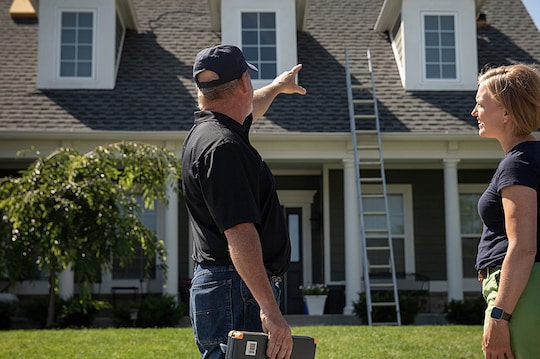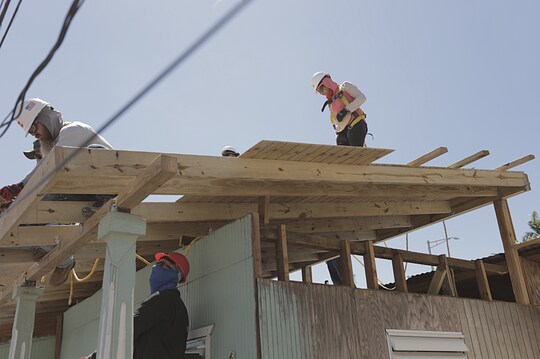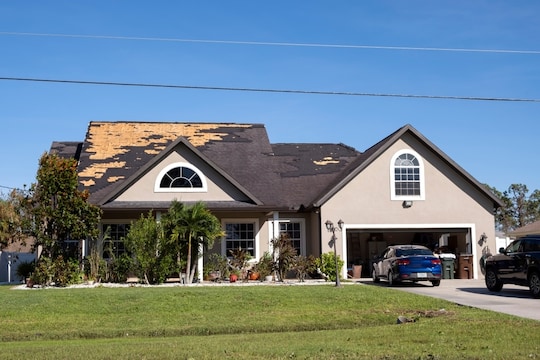
Residential Roofing
How Innovations in Hurricane Shingles Protect Your Roof from Storms
Each year, hurricanes cause billions of dollars in losses for homeowners across the country. In an effort to combat this, the roofing industry has made advances to help reduce the impact caused by storm damage, including specially designed shingles that can handle heavy impacts and high winds.If you live in a hurricane-prone area, here's what you need to know about hurricane shingles designed to handle the high wind speeds and debris impacts that can come with major hurricanes.Understanding Impact-Resistant ShinglesHurricane Shingles, (or impact-resistant shingles) are built to withstand both impacts and high wind speeds. They're robust, often created from a unique combination of styrene-butadiene-styrene (SBS) and asphalt, providing more strength than non-reinforced asphalt shingles.In hurricane-prone areas, sharp winds can easily blow debris and other large objects—like tree branches—onto a roof. Shingles that pass the UL 2218 Class 4 impact-resistant test are most effective at limiting impact damage. These shingles are tested by dropping a 2-inch steel ball from 20 feet above. The steel ball impacts various target locations of the shingles on the test deck. The test includes two impacts per target location. The shingles must handle the impact while showing no evidence of ruptures or cracks through the shingle.These shingles should also be able to withstand Category 3 hurricane wind speeds, ranging from 111 to 129 mph.Choosing the Right Shingles for Your RoofWhen deciding between hurricane shingles, consider their wind classification, impact resistance, and warranties.Wind ClassificationQuality, UL 2218 Class 4 impact-resistant shingles should be able to handle at least 110 mph wind speeds. These shingles tend to be made of either metal or asphalt mixed with SBS. For example, the GAF TimberSteel™ Premium Metal Roofing System is effective against high wind speeds due to layers of protection, innovatively designed to help protect your home against the elements.Impact ResistanceQuality hurricane roofing materials, including impact-resistant shingles come with enhanced protection against impacts from objects, especially hail. While these shingles may be more expensive than non-reinforced asphalt shingles, they tend to require less maintenance. And since these shingles can withstand certain kinds of impacts that often happen during a hurricane, it may not need as many repairs.WarrantiesConsider the shingles' warranties and what you're protected against. A wind warranty can guarantee roof repair and replacement for specific wind speeds as long as you meet all the warranty's requirements.GAF Hurricane Roofing InnovationsCertain GAF shingles like Timberline® AS II have the best possible wind and impact resistance ratings. They meet the highest rating, Class F, for the Standard Test Method for Wind Resistance of Steep Slope Roofing Products (ASTM D3161). This means they can withstand wind speeds up to 110 mph.Timberline® AS II shingles also have the highest rating, Class H, for the Classification for the Standard Test Method for Wind Resistance of Asphalt Shingles (ASTM D7158). This means the shingles can resist uplift from up to 150 mph wind speeds. If that wasn't enough, these shingles' Class 4 classification for the UL 2218 test means they can handle a 2-inch steel ball drop test from 20 feet above.With the highest possible ratings for all these tests, the Timberline® AS II shingles are proven and tested against the closest possible hurricane-like conditions (testing performed under controlled laboratory conditions). The robust SBS-modified asphalt material and LayerLock® technology help fortify your roof against wind, rain, and hail. These GAF shingles are also eligible for the WindProven™ Limited Wind Warranty**, which provides infinite wind speed protection when installed with the required combination of four qualifying GAF accessories.Shingle Installation and Roof Maintenance TipsProperly installing impact-resistant shingles is essential for them to perform their best, so choose an experienced roofer. They'll know how to nail the shingles correctly and make sure they're firmly attached to each other and the roof to prevent any openings for leaks or weaknesses. Also, ask your roofer if they know how to install hurricane clips to help prevent your roof from flying off during a storm.Once your roof is installed, perform regular maintenance every year before and after hurricane season. Replace any missing or broken shingles, and secure any loose shingles. Also, replace any rusted nails or flashing. As part of roof maintenance, confirm your gutters are working properly and clean out any leaves, allowing water to flow away from your home.A weak point on a roof can degrade even further in harsh hurricane weather, and ensuring your roof is in stable condition can help keep you and your home safe.FAQsWhat are the best shingles for high wind?The best shingles for high winds are classified as Class F for the ASTM D3161 and Class H for the ASTM D7158 test. These two classifications mean the shingles have the best ratings for handling hurricane winds.Do impact-resistant shingles last longer?Due to their durable construction, made with SBS-modified asphalt, which makes shingles more flexible and better able to withstand impact stress than standard architectural shingles, GAF impact-resistant shingles are built to last many years.Preparing for the Next StormAfter the hurricane season, check your roof for damage. View this GAF guide on roof storm damage to learn what to look for and what to expect for possible repairs. If your roof needs work before or after a storm, reach out to a certified contractor* in your local area for guidance and support.*Contractors enrolled in GAF certification programs are not employees or agents of GAF, and GAF does not control or otherwise supervise these independent businesses. Contractors may receive benefits, such as loyalty rewards points and discounts on marketing tools from GAF for participating in the program and offering GAF enhanced warranties, which require the use of a minimum amount of GAF products. Your dealings with a Contractor, and any services they provide to you, are subject to the GAF Contractor Terms of Use.**15-year WindProven™ limited wind warranty covers GAF Shingles with LayerLock® Technology only and requires the use of GAF Starter Strips, Roof Deck Protection, Ridge Cap Shingles, and Leak Barrier or Attic Ventilation. See GAF Roofing System Limited Warranty for complete coverage and restrictions. Visit gaf.com/LRS for qualifying GAF products. For installations not eligible for the WindProven limited wind warranty, see GAF Shingle & Accessory Limited Warranty for complete coverage and restrictions.
By Authors Mark Soto
December 06, 2024



